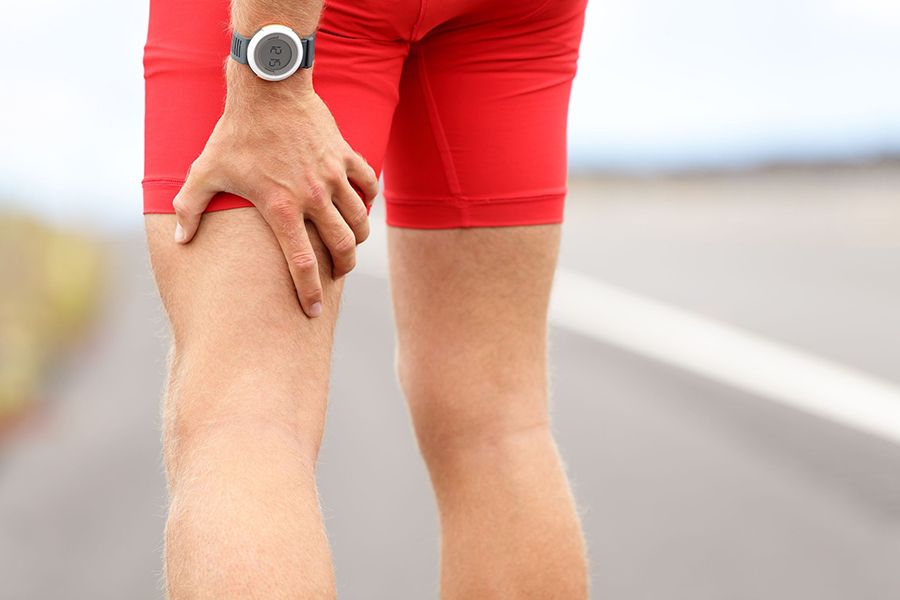Download and print the injury report form here.
Overview:
Hamstring strains make up a substantial percentage (10-23%) of acute injuries in soccer and can result in a lot of missed time from sport. On average, players will miss 8-25 days of sport after injuring their hamstring, depending on the severity of their strain. What’s even more concerning is the vicious cycle of recurring hamstring injury. Almost 1/3 of hamstring injuries will recur, with the greatest risk during the initial 2 weeks following return to sport. This is often due to inadequate rehabilitation, returning to sport too soon, or both. However, you can greatly decrease your chance of re-injury (or prevent the injury in the first place) by following the guidelines below.
Definition:
Hamstring injuries involve straining or tearing the muscle or tendon in the back of your thigh. There are three hamstring muscles that comprise the hamstring group and injury can occur to one or all of the muscle bellies. Injuries to the hamstring usually occur during sprinting or explosive movements – often when they forcefully contract while on stretch or when they fall out of sync of their opposing muscle group, the quadriceps.
Signs and Symptoms:
- A sudden sharp pain in the back of the leg during exercise
- Pain on stretching the muscle
- Pain with contraction/use of the muscle
- There may be swelling and bruising depending on the severity
- Tenderness along the muscle
Risk Factors:
- Previous hamstring injury – There is more than twice as high a risk of sustaining a new hamstring injury if you’ve previously injured your hamstring.
- Sports that involve explosive jumping or sprinting
- Imbalance between hamstring and quadriceps strength
- Inadequate warm-up
- Fatigue – More muscle injuries occur in the second half of the match.
Initial Treatment:
- Rest: Avoid use of the injured leg. This is not a “no pain, no gain” situation – avoid painful activities/movements. Crutches main be necessary for the first few days if you are unable to weight-bear
- Ice: 15-20min, 4-5x/day for the first 2-3days
- If there is swelling, elevate your leg when resting. You can also apply a tensor bandage for compression.
- Advil, Tylenol or Naproxen can be taken to control pain and inflammation – speak with your doctor before adding any medication.
- Ensure proper hydration and nutrition – an anti-inflammatory diet can greatly speed recovery
- Consult with your doctor, physiotherapist, chiropractor, osteopath or athletic therapist to help you during the early stages.
Return to Sport:
Because there is such a high recurrence rate for hamstring strains it is very important that you complete your rehabilitation fully before returning to sport.
General Criteria before Returning to Play:
- Full strength without pain
- Full range of motion without pain
- Able to perform sport-specific movements at near full speed without pain
Compression shorts or different taping techniques can also help to support the muscles in the early stages after returning to sport. You may find that you need to resume icing after practices or games if there is any soreness afterwards.
Eccentric strength training and neuromuscular control exercises have been shown to greatly reduce the risk of re-injury and should be incorporated into your rehabilitation. However, these exercises should only be introduced once you have completed the initial treatment and begun some early muscle activation and stretching exercises as guided by your therapist.
Strengthening:
- Bodyweight Squat
- Pelvic Bridging
- Nordic Hamstring Exercise
- Windmill Lunges and Touches
- Forward T-Tips
Neuromuscular Control and Agility:
- Abdominal Planks
- Karaokes, Side Shuffling, Zig-Zag Shuffling
- A’s and B’s
Prevention:
General Guidelines:
- Adequate warm-up that incorporates dynamic stretching, gradual progression to sport specific movements, progressive running drills, balance and agility training.
- Maintaining good hamstring strength and flexibility
- Proper rehabilitation following initial injury
Include these exercises in your general strength training to minimize your risk of hamstring injury:
- Squats
- Pelvic Bridging
- Hamstring Eccentrics – Nordic Hamstring, Windmill Exercises
- Abdominal Planks
References:
- Heiderscheit, B. C., M. A. Sherry, A. Silder, E. S. Chumanov, and Darryl G. Thelen. “Hamstring Strain Injuries: Recommendations for Diagnosis, Rehabilitation, and Injury Prevention.” Journal of Orthopaedic and Sports Physical Therapy 40.2 (2010): 67-81. Print.
- Engebretsen, A. H., G. Myklebust, I. Holme, L. Engebretsen, and R. Bahr. “Intrinsic risk factors for hamstring injuries among male soccer players.” American Journal of Sports Medicine 20 (2010).
- Ekstrand, J., M. Hagglund, and M. Walden. “Epidemiology of muscle injuries in profressional football (soccer).” American Journal of Sports Medicine 20 (2011).
- Mtshali, P. TS, N. P. Mbambo-Kekana, A. V. Stewart, and E. Musenge. “Common lower extremity injuries in female high-school soccer players in Johnanesburg east district.” South African Journal of Sports Medicine 21 (2009).
- Brumitt, J. “Eccentric training to reduce hamstring injuries in sprinters.” NSCA’s Performance Training Journal 6: 8-10.

